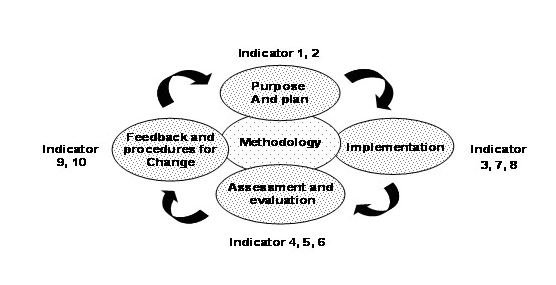ECVET - Application to mobility projects
Main menu:
- Home Page
- ECVET - Overview
- ECVET - Key topics
- Sesamo and ECVET
- User guide
- Coordinator - Supervisor guide
Features
ECVET - Key topics > European devices > EQARF
The Recommendation of the European Parliament and of the Council of 18 June 2009 serves as a reference instrument to help Member States to promote and monitor continuous improvement of their Vocational Education and Training (VET) systems, based on common European references.
EQARF and CQAF
EQARF is based on the principles underlying CQAF in order to promote a culture of quality improvement and wider participation in the European Network for Quality Assurance in Vocational Education and Training. It was designed to
- increase transparency of, and consistency in, VET policy developments between Member States
- promote mutual trust, mobility of workers and learners, and lifelong learning
- contribute to the use of evidence-based policy and practice, as a basis for more efficient and equitable policies
- identify, support and exchange best practices not only at national but also at local and regional levels
- support the implementation of the EQF, in particular the quality of the certification of learning outcomes
- support the implementation of other European instruments, such as the European Credit System for VET, and the Common European Principles for the identification and validation of non-formal and informal learning.
EQARF feature
- The model is based on a set of selected quality indicators; there are 4 phases with a list of indicators referred to the education & training systems (Annex I) and common indicators (Annex II) - see the figure below. Furthermore, the table of indicators does not include aggregated indicators at national level in cases where these do not exist or are difficult to obtain. The aggregation of such indicators at national level can be carried out at a later stage on the basis of a joint agreement between the Member States, the Commission and the European Quality Assurance Reference Framework network
- Monitoring systems (internal and external assessment) should be set out by Member States in order to identify the strengths of systems, processes, procedures and areas to be improved; the monitoring should match internal and external assessment, review and improvement processes according to qualitative analysis
- instruments to provide data functional to measure the effectiveness.
The model
The reference framework is based on the quality cycle which comprises the four phases:
- setting of policy goals/objectives and planning
- implementation phase
- evaluation phase which deals with the design of the mechanisms for evaluation and the assessment of achievements/outcomes at individual, provider and system levels
- review, based on a combination of internal and external evaluation results, processing of feedback and organisation of procedures for change.
EQARF in practice
